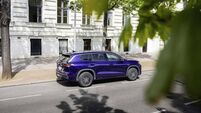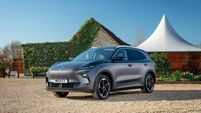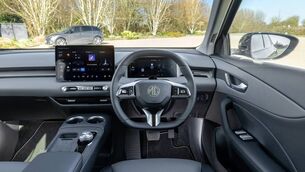MG Cyberster review: An affordable electric sports car that actually delivers

The sporty MG Cyberster
|
MG CYBERSTER |
|
|---|---|
|
Rating |
★★★★☆ |
|
|
€69,900 as tested |
|
|
a very fast electric with either 335bhp or 496bhp |
|
|
Around 500km |
|
|
very thorough indeed |
|
|
a true glimpse of what the Chinese are capable of doing |
Beauty is both timeless and permanent. It also, when it comes to motoring, tends to come from predictable sources.
Certain manufacturers have the knack for it, and a car’s beauty doesn’t necessarily mean large dollops of spondulicks have to be outlaid to secure it.
Down the years, there have been very significant numbers of gorgeous small cars and superminis, and even a fair share of mid-range beauties.
Of course, though, it is the super-rich contenders such as the Lamborghini Countach or the Ferrari F40 (any Ferrari, in fact) that catch the public’s imagination and fire the dreams of young people everywhere who live with the thought that, one day, they too could own such a thing.
For lesser brands, ambition is a bold thing, but it is a characteristic that’s good to see from any manufacturer—indicating, as it does, that they have not only the scope to produce something beautiful and extraordinary, but they are willing to get out on a limb and shake the tree a bit.
Making something beautiful and eye-catching is one thing; making it any good is quite another. It is at this point we introduce the MG Cyberster, an all-electric two-seater roadster. It is what’s called a ‘halo’ project and, while not necessarily designed to sell in vast numbers, it is a statement of intent.
For a company like MG, which is now a Chinese reconstruction of an old English nameplate associated with sportiness and élan—it was also associated with poor workmanship, often dodgy engineering, and appalling reliability, but that is of little consequence.
For the Chinese, assuming ownership of the brand gave them an entrée to customers that they would otherwise not have had and allowed them to burnish their product with a name that is pretty much instantly recognisable and carries a degree of heft.
To date, the cars that MG has been exporting to Europe and beyond have consisted mainly of no-nonsense hatchbacks and SUVs, the majority of which are electrics or hybrids. The MG4, for example, has sold well in foreign markets—well, foreign to China, anyway—on the basis of sturdy practicality, decent range, and competitive pricing.
In Ireland this year, MG sold some 740 vehicles in total to the end of March, up from 606 units in the same time period last year. The MG4 accounted for 306 of those sales.
Our tester this week has only notched up the grand total of six. That is not because it’s bad; simply that two-seater roadsters—and especially electric ones—are not for everyone and will, naturally, have limited appeal.







